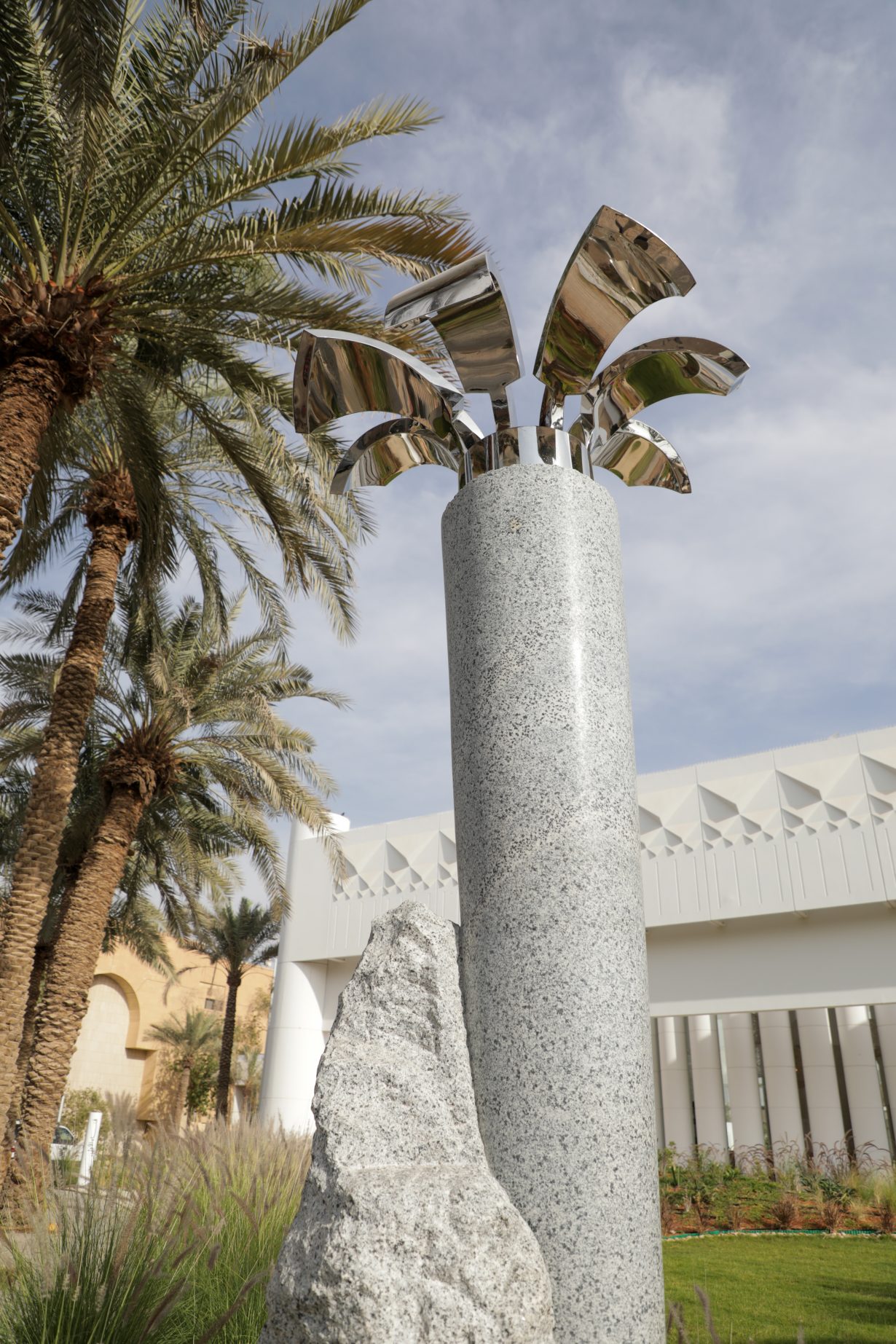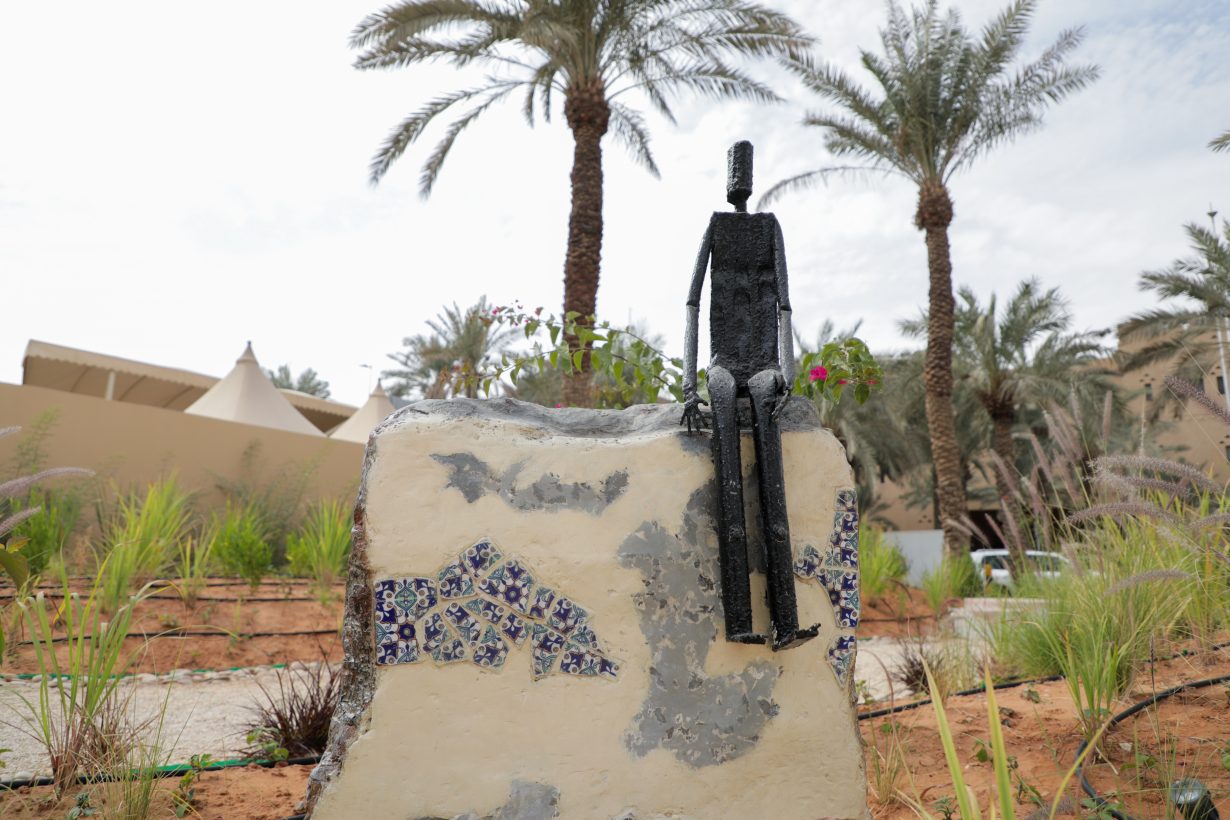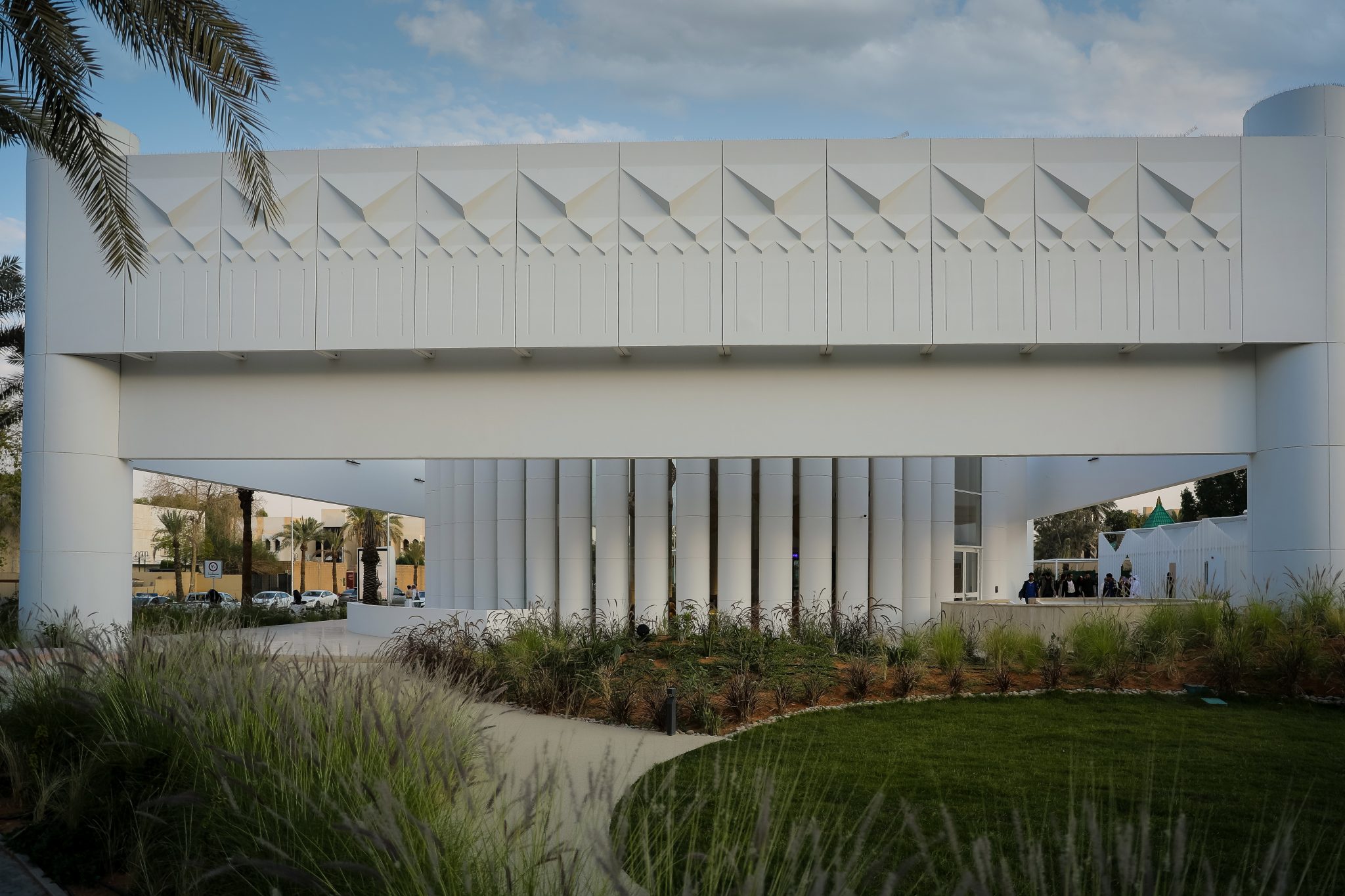An ‘earnest buddy comedy’ of an institution is a welcome addition among a flurry of development in the regional capital’s burgeoning scene
Recent years have seen a flurry of development working to launch the Saudi capital within the regional and perhaps even international art scenes. It shows no signs of abating; if anything, things seem to be speeding up. Thus far, much of the governmental thrust has focused on the historical suburb of Diriyah, recently anointed as one of the oil-diversification-blueprint Vision 2030’s ‘gigaprojects’. It is home to the requisite m50- or Gillman Barracks-style converted-warehouse creative district of JAX that hosted the inaugural Diriyah Biennale in 2021, as well as a number of artist studios and residencies. Outposts of Jeddawi galleries Athr and Hafez, and the Saudi Arabian Museum of Contemporary Art are soon to follow. Opening nearby is Diriyah Art Futures, an educational and museums cluster dedicated to digital art, with an emphasis on AI and machine learning, and most promisingly a new media-research centre.
In downtown Riyadh, meanwhile, will be the Jack Persekian-directed Black Gold Museum dedicated to the resource that’s still keeping all these wheels spinning, and the mammoth Royal Arts Complex, which will include five museums, a theatre, an outdoor amphitheatre and several cinema halls and art academies. And to the east, the abandoned Irqah Hospital, which once treated Gulf War combatants and is widely believed to be haunted, hosted a graffiti festival last autumn en route to being remediated as a cultural centre. The long-delayed Riyadh Metro should finally open this year, making navigating the sprawling, traffic-choked capital a bit easier, accompanied by an ambitious public-transit art programme from Riyadh Art. The Misk Art Institute ticks on quietly, albeit with asymmetric, varying quality; an upcoming show organised by Hawai’i Triennale co-curator Wassan Al-Khudairi looks especially promising.

It’s a churn of furious infrastructure building, in short, dampened only by what feels like a pervasive belief that government can replace market. The commercial scene remains anaemic – this is a time in which it’s much more profitable for galleries to bid for government projects than focus on selling art – and artists struggle to build and maintain sustainable practices without sales. With the rumoured dissolution of Jeddah’s independently funded arts organisation sac (formerly the Saudi Art Council, responsible for the major annual exhibition 21,39 Jeddah Arts), the status of what was functionally the Kingdom’s only art fair, Shara, is especially up in the air. There are only so many times, after all, that you can receive a grant, an award, a biennial commission; and what then? How, as an artist, are you to live?
On a recent visit I was heartened to register the emergence of a number of new, less bombastic projects. Chief among these is Fenaa Alawwal, a cultural centre launched by the Ministry of Culture in December. The circular building, in the posh Diplomatic Quarter, used to house Saudi Arabia’s first commercial bank, which once held the country’s gold reserves.

As such its first basement exhibition, Memory Deposit (which ran through to 28 February), curated by Tala Al Ghamdi, takes currency
as its focus. It’s surprisingly good given what sounds likely to be a rather unfocused programme; highlights include Alia Ahmad’s sprawling imagined landscape that sutures together the natural features found on Saudi banknotes with Basmah Felemban’s installation of resin fish, and a flickering projection that weaves a fishy tale from a nearby wadi with her own family’s migration history.
The small exhibition space is joined by a coffeeshop, and art and design library, and soon a restaurant. Fenaa Alawwal, it seems, is very excited about being the rather dusty term ‘third space’. Outside, a sculpture garden mostly featuring new commissions includes a welded Slenderman-like figure by Saddek Wasil, an Ugo Rondinone Magic Mountains (2016–) and what can only be described as a satisfyingly corporatised office block lobby-turned-palm tree, with stainless steel fronds atop a limestone column, from Nagi Farid. It’s a nice place, pleasing primarily in what feels like a total lack of ambition – and I mean this in the best way possible. It’s an earnestly bumbling buddy comedy to the blockbuster projects happening elsewhere in Riyadh, and seems to augur a quieter, more thoughtful maturation of the scene.
